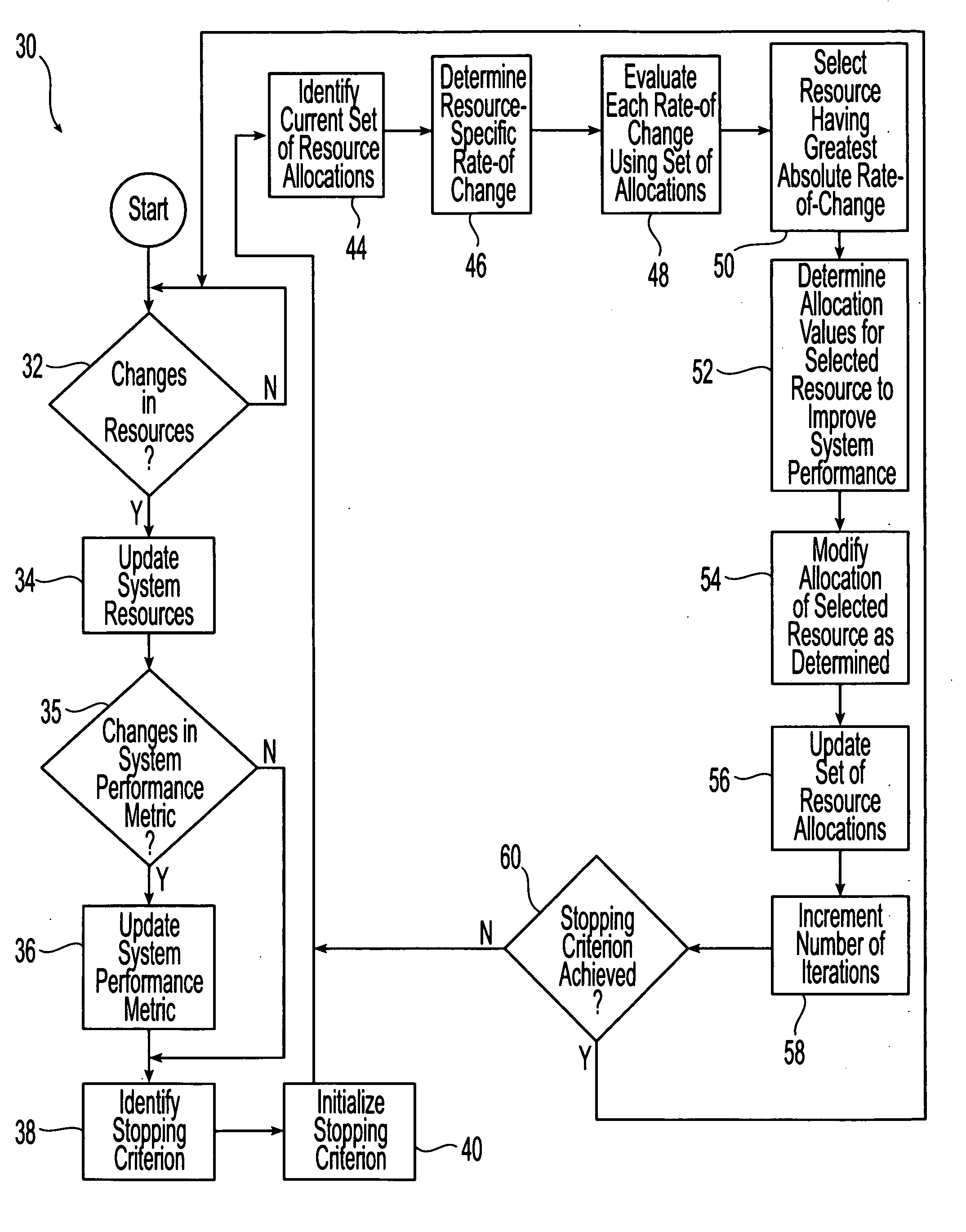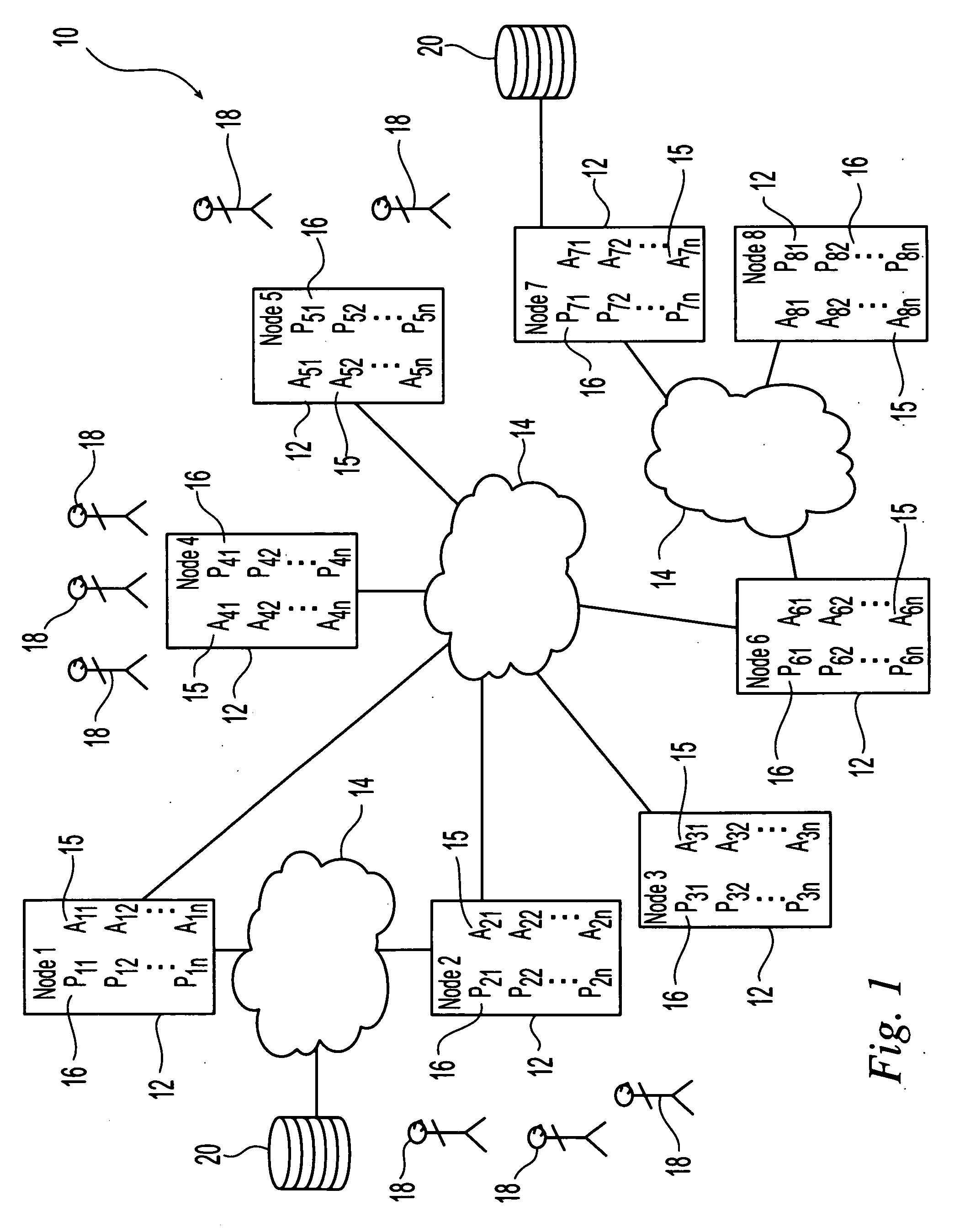Multiple resource control-advisor for management of distributed or web-based systems
a resource control and multi-resource technology, applied in the direction of instruments, digital computers, computing, etc., can solve the problems of not even being feasible, certain combinations of resource allocation levels are infeasible, and the combination of 5% bandwidth and 40% cpu fails to ensure the achievement of the goal
- Summary
- Abstract
- Description
- Claims
- Application Information
AI Technical Summary
Benefits of technology
Problems solved by technology
Method used
Image
Examples
Embodiment Construction
[0020]Exemplary systems and methods in accordance with the present invention enforce system performance goals, as expressed for example in service level agreements (SLA's), in autonomic computing systems through the allocation of multiple resources among multiple resource demands while taking into account the inter-relationships among the various resources. These inter-relationships result from the concurrent operation of multiple system resource demands and the associated simultaneous demands on each system resource.
[0021]Referring initially to FIG. 1, an example of an autonomic computing system 10 for use in exemplary embodiments of the present invention is illustrated. Suitable autonomic computing systems 10 can be arranged, for example, as information technology (IT) systems, distributed networks, local area networks and peer-to-peer networks. As illustrated, the autonomic computing system 10 includes a plurality of distributed nodes 12, computers or servers that are in communic...
PUM
 Login to View More
Login to View More Abstract
Description
Claims
Application Information
 Login to View More
Login to View More - R&D
- Intellectual Property
- Life Sciences
- Materials
- Tech Scout
- Unparalleled Data Quality
- Higher Quality Content
- 60% Fewer Hallucinations
Browse by: Latest US Patents, China's latest patents, Technical Efficacy Thesaurus, Application Domain, Technology Topic, Popular Technical Reports.
© 2025 PatSnap. All rights reserved.Legal|Privacy policy|Modern Slavery Act Transparency Statement|Sitemap|About US| Contact US: help@patsnap.com



